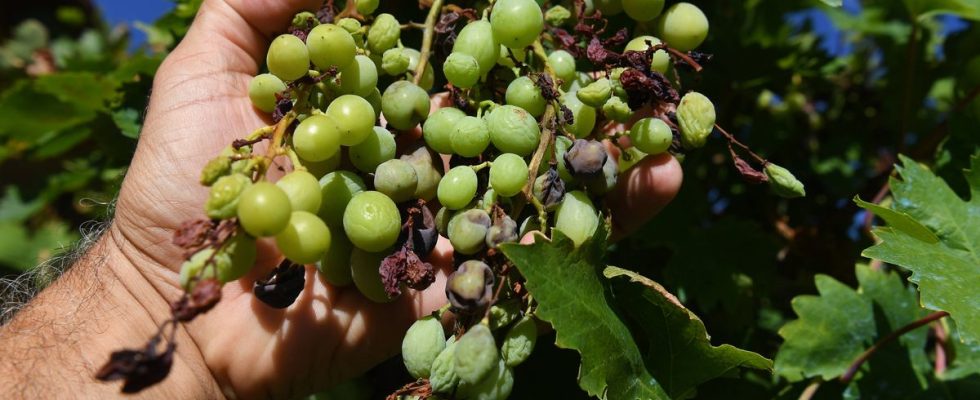It is still early to predict the harvests of the 2023 harvest. The very first strokes of the pruning shears have just been given – last week in the vineyards of Fitou, in the south of France – and the harvest is spreading out until in early fall. But initial estimates published on Tuesday by the services of the Ministry of Agriculture provide for a harvest “at the level of the average” of recent years.
“Wine production would be between 44 and 47 million hectoliters in 2023, at the average level” of the years 2018 to 2022, reports the statistical service of the ministry, Agreste. But these harvest forecasts “are provisional in view of the uncertainty surrounding the consequences of attacks of mildew in the vineyards of Bordeaux and the South-West”, specifies Agreste.
Apart from the South-West and Languedoc-Roussillon, where “a persistent drought is rife”, “the situation in the other vineyards remains generally favorable, the soils having been replenished with water in most basins”, according to the economic report . France had produced more than 46 million hectoliters of wine in 2022 despite the exceptionally dry summer.
Diseases favored by spring weather
This year, the situation is particularly tense in Bordeaux, already facing a crisis of overproduction. “Frequent rainfall associated with high temperatures” in the spring favored the development of downy mildew, a parasitic part-algae, part-fungus. The leaves are covered with spots and wither, the clusters dry up until they are mummified and fall to the ground.
In addition to mildew, other vine diseases (oidium, botrytis) “cause significant losses that can reach up to 30% on average” in the production areas of the South-West.
The harvest presents itself much better in Champagne, where “the bunches are well supplied” and the diseases “contained”. In this region, as in Burgundy, the production potential is expected to be above the 2018-2022 average.

